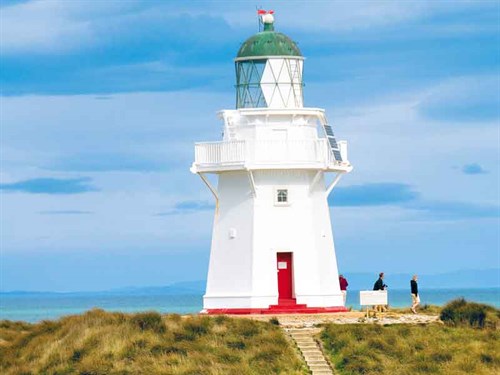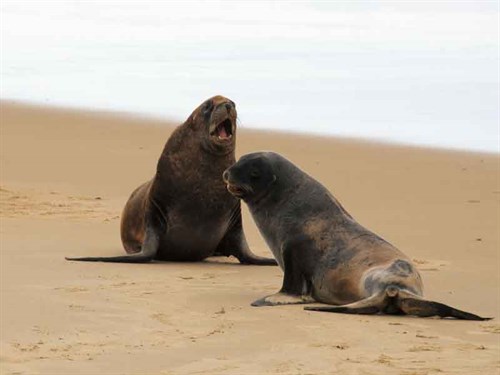The shallow waters, strong currents, reefs, and westerly gales of Foveaux Strait have gained notoriety among seafarers. Even such a practised seafarer as Captain James Cook noted:
“There was no standing up on legs without the assistance of hands.”

But I needed no hands as I stood on terra firma at Waipapa Point in the Catlins, which overlooks Foveaux Strait and the beach. It was low tide and I could clearly see, close to shore, the reef that on 19 April 1881, spelled the end of the luckless SS Tararua bound for Melbourne via Bluff.
She was neither first nor the last ship to come to grief in the Strait or on the Otara Reef, but 131 lives were lost, which made it New Zealand’s worst civilian maritime disaster.
When the Tararua struck, things didn’t look too bad. One passenger, George Lawrence, managed to swim ashore to raise the alarm. He ran to the nearest farmhouse, pounded on the door, which was opened by the resourceful Charles Gilbert. Leaving George to recover, Charles rode his horse, first to Fortrose and then another 30 miles on to Wyndham to raise the alarm. There is no record of what became of the horse after such a heroic ride.
But rescue arrived too late. The ocean had become ferocious and those onshore could only watch as wave upon wave swept people overboard and they were swallowed by the swollen sea. At 2.30pm the next day, one last cry for help was heard before the ship listed and sank. The Court of Inquiry recommended an urgent response from the government—a lighthouse must be built on the point forthwith.

The handsome white-painted beacon I walked to 135 years later was the result. Clad in a double skin of kauri and totara, it’s one of the last major timber towers built in New Zealand. It shone for the first time on 1 January 1884 and is still active today.
The incident instigated two important changes to New Zealand maritime safety procedures: the compulsory provision of life jackets for ship passengers, and that crews must regularly practice lifeboat evacuation.
In Tararua Acre, a cemetery behind the sand dunes, 64 of the victims are buried. I walked across the paddock to pay my respects but there was only one headstone. The headstone was for William Bell. He was only 28 years old. Apart from two small monuments, the rest lie un-honoured and unsung.





